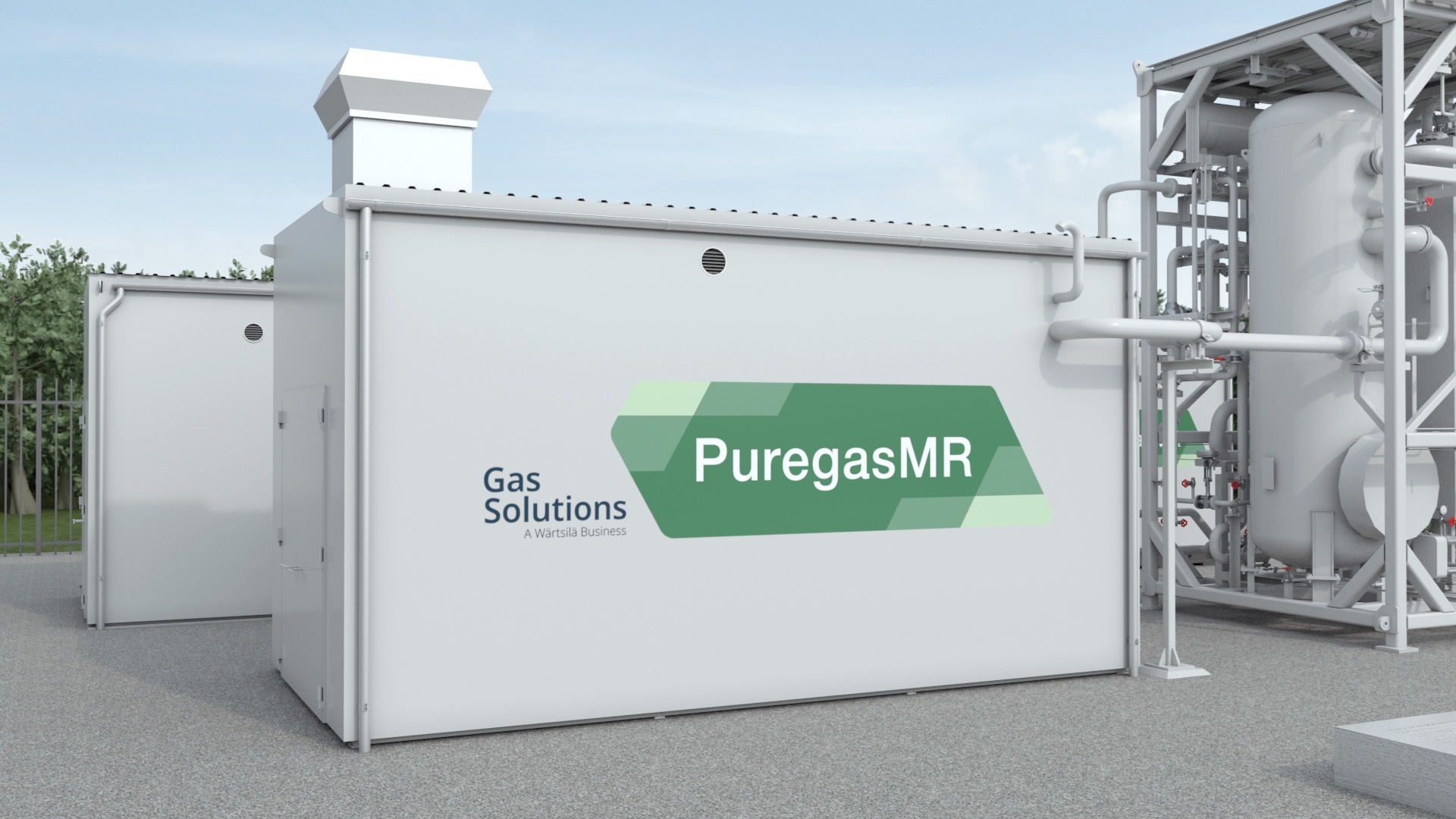

The world is seeking ways to reduce CO2 emissions and achieve climate targets. While the European Union has established a goal to be climate neutral by 2050, Denmark’s government has gone a step further. In 2019, Denmark announced its target to reduce carbon emissions by 70 percent from 1990 levels by 2030, and to be fully aligned with the EU’s goal by 2050.
A key element in achieving these ambitions can be the emergence of upgraded biogas as a viable alternative to fossil fuels. The upgrading process is crucial for enhancing the efficiency and utilisation of biogas as a renewable energy source, and today the market is booming. Gas Solutions’s capabilities in designing and delivering biogas upgrading solutions have made it a leader in this field.
Biogas is produced from the decomposition of organic materials. Food waste, wastewater sludge, agricultural produce, manure, and organic waste of all kinds can form the raw materials used in biogas production. When processed, it can be upgraded to obtain pure biomethane, or renewable natural gas, which can then be compressed or liquified and used as a low-carbon transportation fuel. It can also be injected into the natural gas grid to provide clean, renewable energy for industries, homes and commercial buildings. When liquefied it becomes a sustainable fuel for trucks, busses or shipping applications.
Scandinavia leading the green transition
Europe is currently the world’s largest producer of upgraded biogas and biomethane, and Scandinavia in particular – as exemplified by Denmark’s carbon reduction targets – is especially well advanced in adopting biogas to boost sustainability.
In Denmark for example, there are six biogas plants operating with Gas Solutions’ PuregasCA -biogas upgrading technology. The country’s biogas production and utilisation have been further scaled-up with orders for two more projects with the PuregasCA solutions with total capacity to upgrade 9000 Nm3 of raw biogas per hour. For Denmark, these projects emphasise the importance of integrating various renewable energy sources within a holistic energy strategy.

Other Scandinavian countries plus Finland are also gearing up for increased biogas capacity. At the current Gas Solutions has multiple project executions ongoing in Sweden and Finland for new biogas upgrading and liquefaction plants coming into operation 2025 and 2026.
Other European countries are also taking advantage of the climate benefits made possible by upgraded biogas. In the U.K. an innovative Green Gas Mill project will turn grass into gas that can be used to heat homes. The grass is broken down in a silage container for approximately two months. It is then placed in a digester, where it gives off methane-rich gas, which is then upgraded with a Gas Solutions system before being fed into the domestic gas network.
Germany and Latvia are other European countries turning to biogas solutions. In general, the European Union strongly supports biogas as a circular decarbonisation solution. Through funding initiatives and government subsidies, the EU is working hard to reduce reliance on fossil fuels and enhance energy security. This is exemplified by REPowerEU, the European Commission’s plan to make Europe independent from Russian fossil fuels well before 2030, in light of Russia's invasion of Ukraine. Upgraded biogas will play an important role in making this possible.
The technology driving this decarbonising trend
Gas Solutions unique PuregasCA process is central to the production of high quality biomethane, which can be liquefied with Gas Solutions energy effective PuregasMR process to produce bioLNG for transport or storage, without any additional pre-treatment steps. It is a technology that points the way towards achieving carbon neutrality by 2050.
PuregasCA recovers up to 99.9 percent of the methane present in raw biogas. This maximizes the biomethane yield that can be utilised. It is a cost-competitive process that removes the CO2, water, hydrogen sulphide (H2S) and other impurities, resulting in a high-caloric natural gas substitute. The system features low operational costs to provide affordable renewable energy for consumers. The biomethane can also be stored and used to balance the intermittent supply of energy from wind and solar.
For liquefying upgraded biogas, Gas Solutions offers its well proven and energy-efficient mixed refrigerant PuregasMR technology. This system uses a single compressor and one aluminium cryogenic plate heat exchanger as the main components. A standard chiller is incorporated to improve energy efficiency and to ensure stable operation of the PuregasMR process. To take biogas to liquid biomethane at –160 C, which is required to enable use of existing infrastructure for LNG, consume less than 0.75 kWh per kg liquid biogas.

The latest addition to the Gas Solutions platform is its PuregasBC system. While the traditional method for handling CO2 from biogas upgrading plants has been to ‘catch and release’ it to the atmosphere PuregasBC, on the other hand, purifies and liquefies the CO2 for re-use.

Biogas is already a circular, zero carbon footprint fuel, and PuregasBC now makes it a carbon negative solution as well. In addition to the environmental benefits, the solution also offers a new, and commercially profitable, revenue stream for the plant owner, as the captured carbon dioxide is purified to food and beverage grade, and/or storage grade. Upcoming regulations for e-fuels production requires bio CO2 as feedstock, making the PuregasBC solution an ideal fit.
An expanding market
There are numerous established uses for biogas, including fuel for vehicles, electricity production, and as a gas used domestically and commercially. As companies, governments, utilities, and various authorities continue to target decarbonisation as a means to combat climate change, the benefits of biogas are increasingly being recognised. This is leading to a growing number of actual and potential applications.
Perhaps one of the most significant future uses of biogas will be as a maritime fuel. There are already ships operating with bioLNG fuel, and this market is expected to grow as the marine industry’s transformation to carbon-free operations accelerates. Emission regulations from both the EU and the International Maritime Organization (IMO) are driving the trend towards green fuel options.
Whatever the application, Denmark and the rest of Scandinavia are guiding the way for successful biogas production and utilisation.
Did you like this? Subscribe to Insights updates!
Once every six weeks, you will get the top picks – the latest and the greatest pieces – from this Insights channel by email.
